Review: Dawn of Iron by Scary Biscuits Studios
By Mitch Reed
I always wanted to get into playing with American Civil War Ironclads, however I was never motivated by any of the existing rules to start collecting and playing this period. This changed last year when I saw a sneak preview from Mike Haught (Yes, the one from Battlefront) which featured a set of rules he was working on.
Mike started with a desire to tackle very underrepresented genres of gaming in way that focuses on a more complete story of the period. His first title, The Dawn of Iron (DOI) really changes the landscape of ACW naval combat, and it is a game that I feel many gamers will love.
Once I saw the game I started to speak with Mike and invited him to speak at our and I recently sat down and spoke with him about this new game on a As you can clearly hear in these interviews, Mike has a different vision when it comes to not only game design, but the story the game tells the players.
Mike focuses on the “human element” which in the case of DOI means the crews who manned these first ships clad in iron. These manifest within the game is the games focus on how the crews fought, maneuvered and repaired damage on their ships.


Game Mechanics
Many players of Battlefront games will notice some similarities in how DOI is presented, this is no accident since the great designer Phil Yates is one of Mike’s mentors. The game features 1/600 scale naval combat with deep mechanics that do not overwhelm the gamer. All of the ship status data and tables are on easy-to-understand cards that does not bog the game down with status tracking that makes some naval games a very dry affair. This fact should not be overlooked, as a fan of naval games I am aware of how some games become a rivet counter affair that seems to lack the human face if battle.
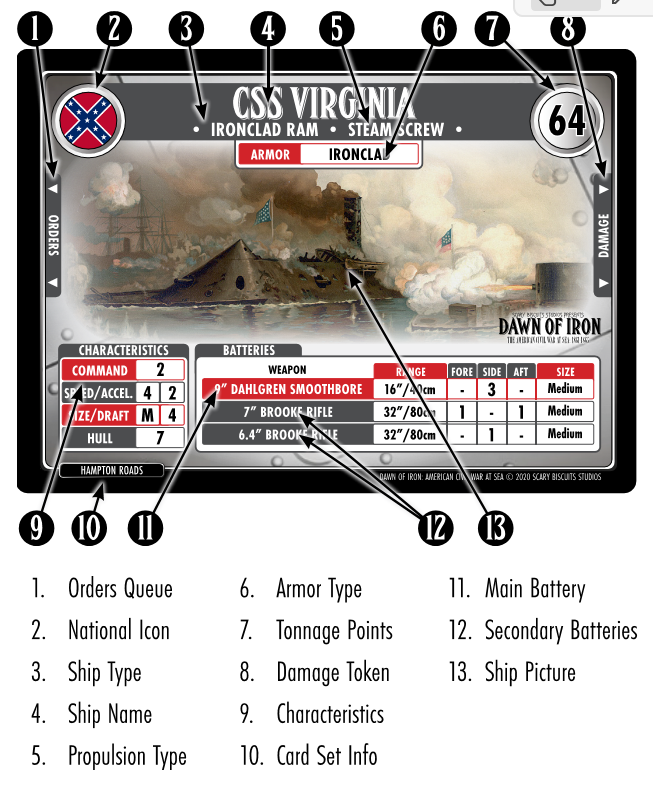 Each turn has three phases, a Command Phase where you select ship orders, a Control Phase where you carry out these orders and a then an End Phase where the players resolve the status of their ships. Ship commands are based on selecting a specific Orders Card and then placing a matching token in the command queue. Each ship has a different Command Rating which indicated how many Command Tokens they need in their stack. This mechanic is a lot like the one used in Star Wars Armada and the rating is based on all sorts of factors such as ship/crew size and internal communications.
Each turn has three phases, a Command Phase where you select ship orders, a Control Phase where you carry out these orders and a then an End Phase where the players resolve the status of their ships. Ship commands are based on selecting a specific Orders Card and then placing a matching token in the command queue. Each ship has a different Command Rating which indicated how many Command Tokens they need in their stack. This mechanic is a lot like the one used in Star Wars Armada and the rating is based on all sorts of factors such as ship/crew size and internal communications.
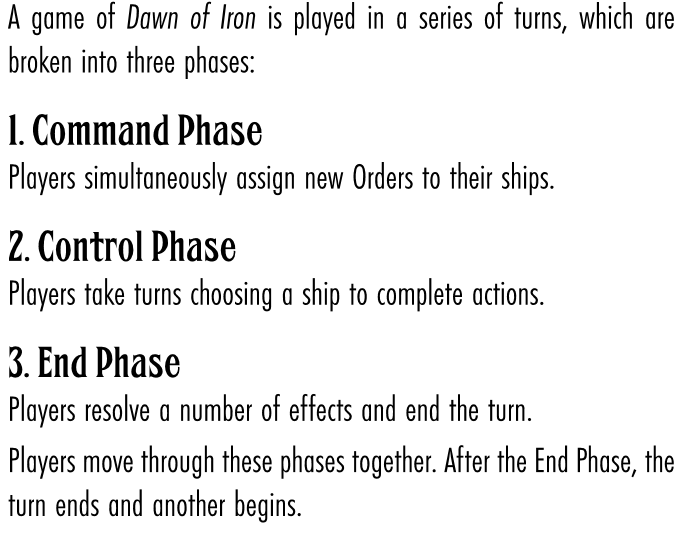 This mechanic causes the player to “think ahead” as to what actions the ship will need to take 2-3 turns in the future.
This mechanic causes the player to “think ahead” as to what actions the ship will need to take 2-3 turns in the future.
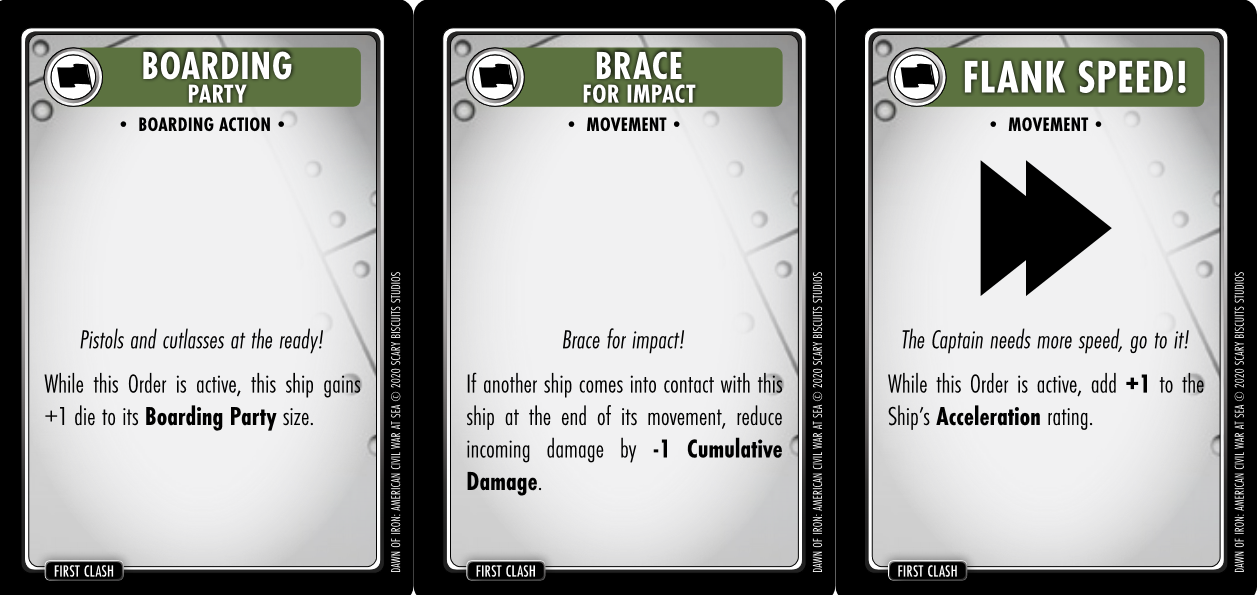
When it is time to shoot, some ships based on their firing arcs can select multiple targets that are in range then assign shots by which arcs can see the target ship. Fire is handled in a series of die rolls, the first is a firing solution based on the target’s size, range and speed. If you hit your target, damage is then based on gun size and the armor of the targeted ship.
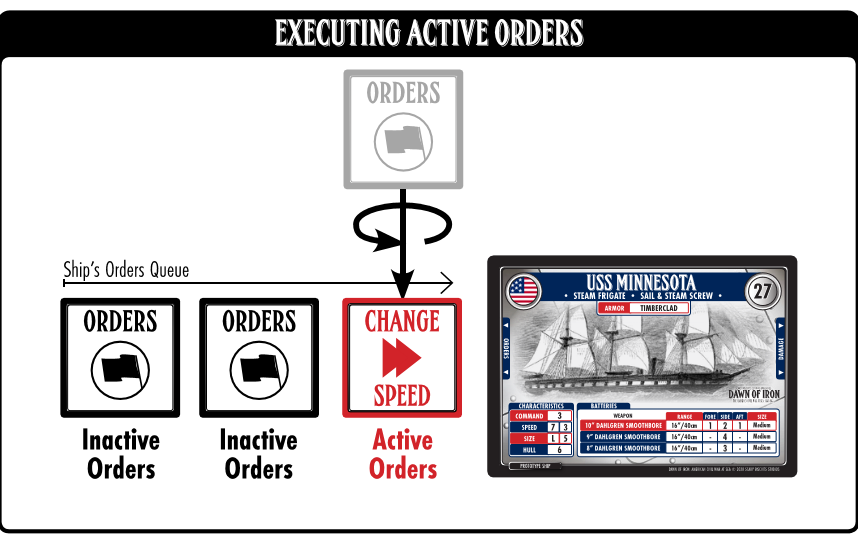 At this time, you roll to see what type of damage you inflicted upon the target. You have three types of damage a ship can receive; cumulative damage, critical damage or you can “one shot” the ship with a catastrophic hit which eliminates the target. Some weapons will never cause catastrophic damage and you will mostly be causing cumulative and critical hits during game play.
At this time, you roll to see what type of damage you inflicted upon the target. You have three types of damage a ship can receive; cumulative damage, critical damage or you can “one shot” the ship with a catastrophic hit which eliminates the target. Some weapons will never cause catastrophic damage and you will mostly be causing cumulative and critical hits during game play.
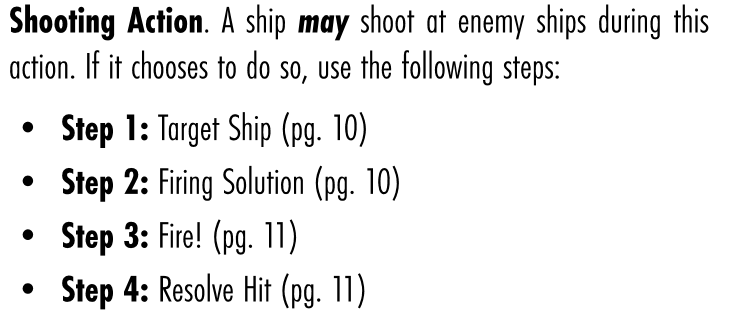 Once a player rolls successfully for damage their opponent draws a card that corresponds to the type of damage suffered and applies the text on the card to their ship. Some damage can be repaired in the End Phase based on the ships Repair Rating, however more serious cannot be repaired during the game since they are so severe. Once a ship suffers hits equal to its Hull Rating it starts to sink and is no longer of any use to you.
Once a player rolls successfully for damage their opponent draws a card that corresponds to the type of damage suffered and applies the text on the card to their ship. Some damage can be repaired in the End Phase based on the ships Repair Rating, however more serious cannot be repaired during the game since they are so severe. Once a ship suffers hits equal to its Hull Rating it starts to sink and is no longer of any use to you.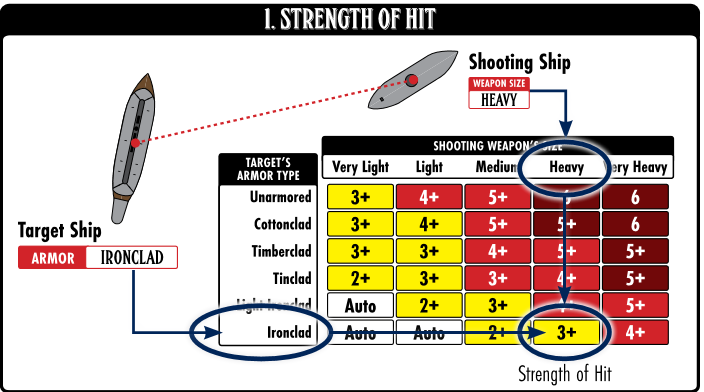
In the 15-page rule book you have rules that cover boarding actions, collisions, ramming, entangling, wind direction, sea state and land features such as coastal batteries and forts. The game also has some advanced rules which add some extra details to the game.
The Battle of Hampton Roads
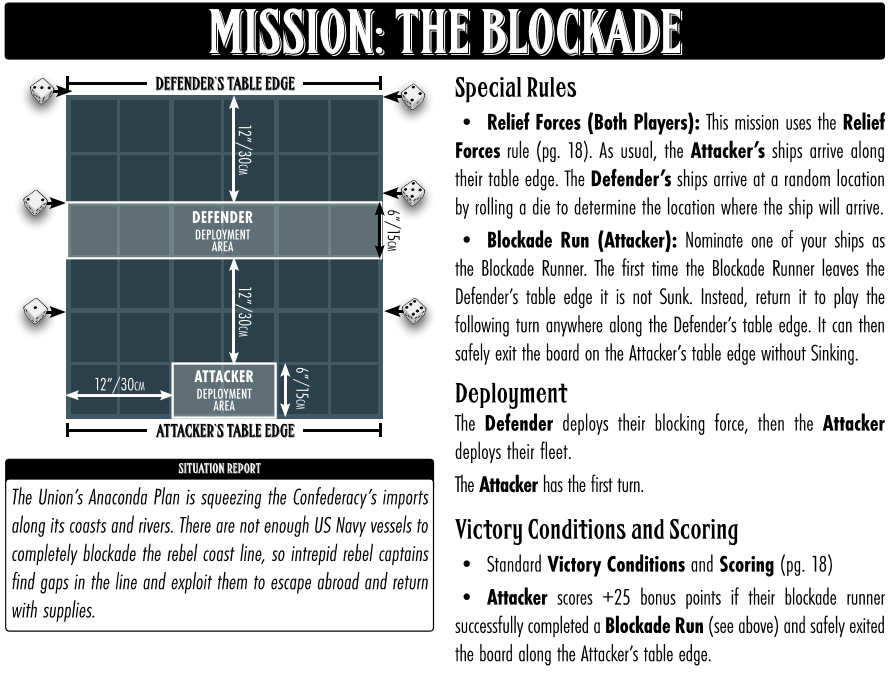
The basic game comes with a battle pack that covers the Battle of Hampton Roads which took place in 1862 and is best remembered for the first clash of ironclads. This pack comes with about 50+ ships and a well detailed history of the battle and some more missions players can choose from. I never realized that so many ships were present at this battle and Mike’s research gives you a lot of neat ships to play with along with forts and rules for mines.
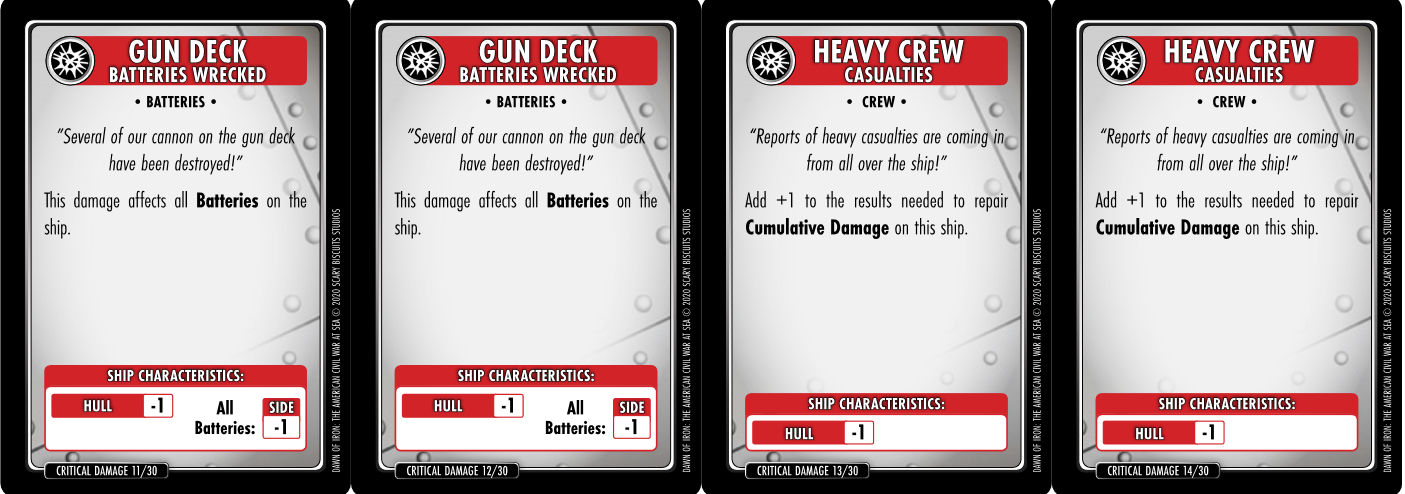
Playing the Game
I played the game in the early days and really liked the approach Mike took with DOI. While it represents ACW naval combat, it also gives the players a taste of what it was like to command a ship. The decisions a commander had to make in the heat of battle is well represented in the game and it was Mike’s focus to have the game represent what the crews of these ships faced in battle.
In my play tests I usually played with two ships per side and that was enough for me to really enjoy the game. I think the sweet spot is 2-5 ships per side. If you plan to take more than 5 ships I feel you will miss out on some of the excitement the game provides and becomes a game of fleet management more than ship on ship combat.
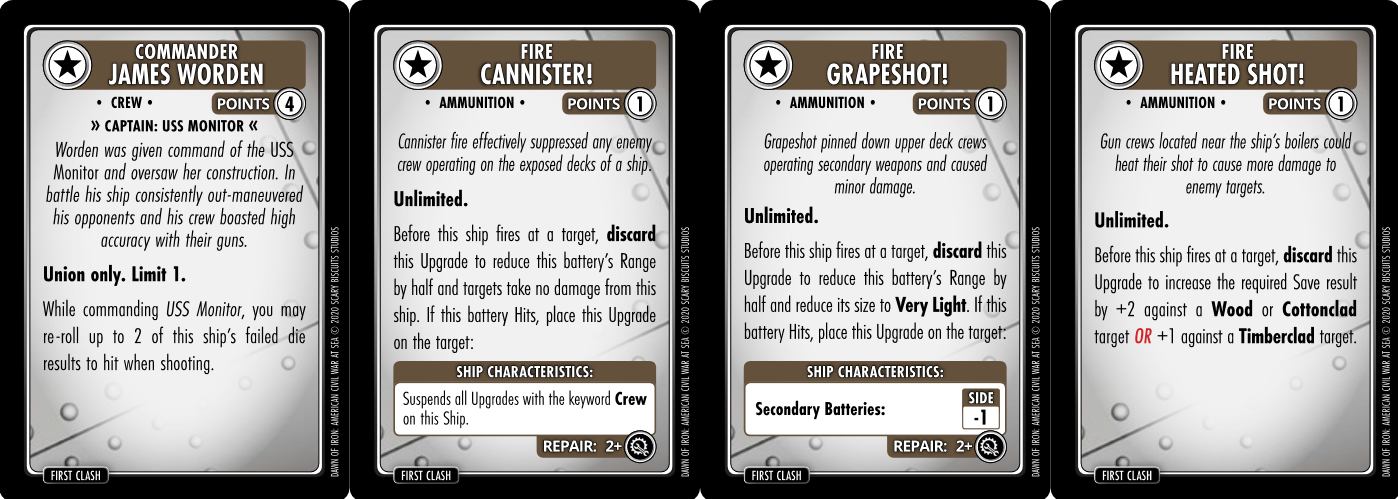
Players should note that the game is point based, which means that each ship has a set cost that can help you balance the game. The game also allows you to upgrade your ships with a host of famous captains, ammo, marines and crew upgrades which could be the difference between victory or death. The points system also makes this game ready for the tournament scene.
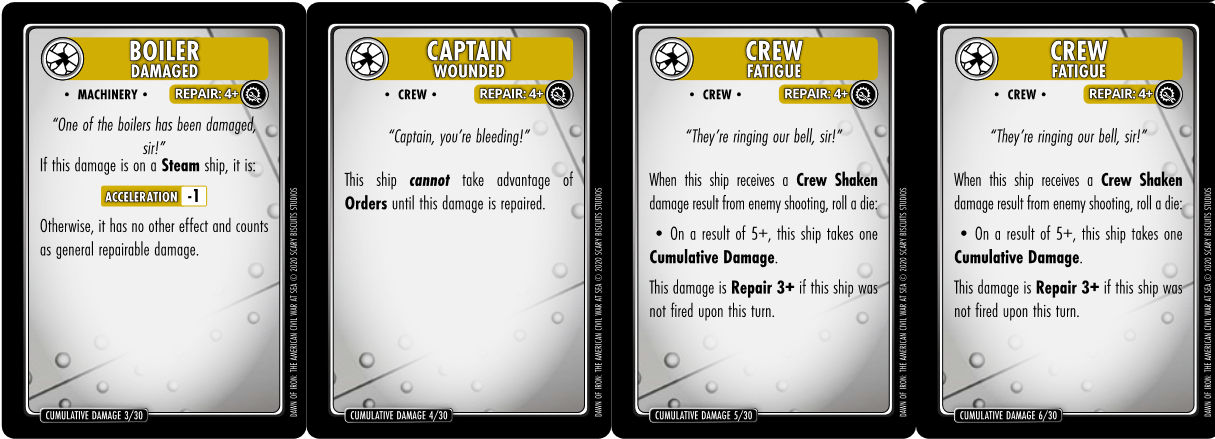
The Future
I really recommend listening to my Interview with Mike, he details the plans he has for DOI going into the future. Mike wants the games to cover the river actions during the ACW as well as adding raider actions. Mike also plans to expand the ships in the game and some the ships he is planning to put in the game can be found in beta test format on the Scary Biscuits Studios website.
If the game takes off you can expect the theater of the game to expand to Europe and the time line move into the future. I think the mechanics of this game would be great for combat up to the period of the Spanish-American War.
 Overall Impressions
Overall Impressions
This game has gotten me excited about playing ACW naval and I now have a small collection of 1/600 miniatures to play Dawn of Iron. I think the game is really worth checking out even for the most salty of naval gamers, the approach of the game makes it a unique ACW playing experience that has both the details rivet-heads love and the ease of play most gamers enjoy.
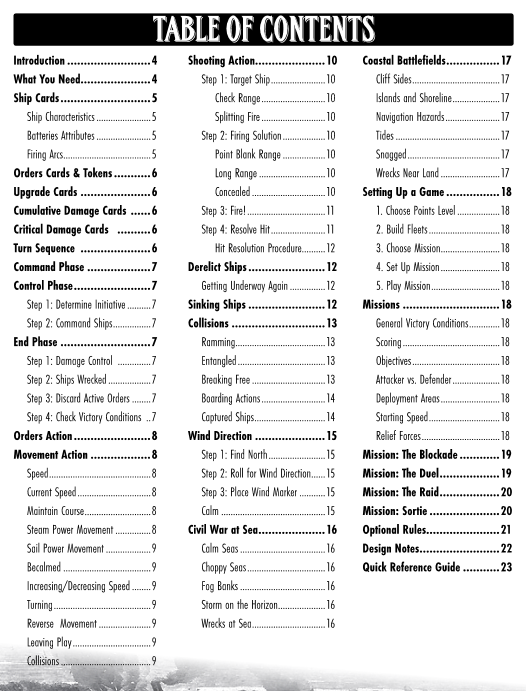

Great review that captures the main features of this game especially the narrative aspect, historical details, and fast play rules. I think your point about the ideal size game vis. “the sweet spot is 2-5 ships per side”, is spot on, as that seems the ideal size to retain the story aspects while requiring some complex tactical decisions and manouvres. I have played lots of naval games and this one is for me a keeper. (Disclosure: I also was a play-tester).
LOL, I think my name is in the book too… shhh